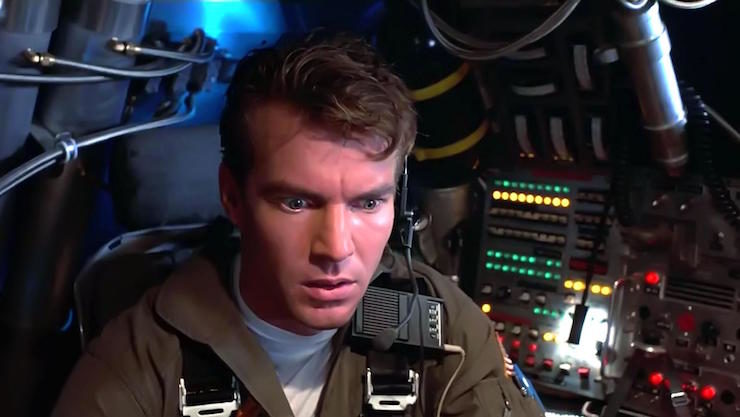The ’80s sci-fi comedy, a sub-sub genre that defined my childhood (for better or worse) with films like Back to the Future and Real Genius, is alive and well in 2016. So far this year, we’ve seen the Ghostbusters reboot, as well as the more comical elements of Stranger Things (which includes an obligatory makeover montage!). Meanwhile, another edition of Guardians of the Galaxy is on the way, a follow-up to a film that dialed the nostalgia up to eleven.
No doubt the genre, in its earliest days, cashed in on the success of the Star Wars movies, combining new special effects with the increasingly raunchy humor of teen comedies. The Reagan years provided a useful foil for the subversive, underdog heroes, with government agents and evil corporations often cast as the villains—though I suppose the original Ghostbusters compromised slightly on this theme by making the bad guy a representative of the EPA. At the same time, the genre brought out some of the worst tendencies of the era. Weird Science, a film in which two horny losers build the “perfect” woman, is even more troubling than you remember. Monster Squad has not aged well, either, thanks in part to its use of a certain epithet common in the ’80s but mercifully going out of style today. And let’s agree not to talk about Howard the Duck.
Firmly perched in the genre, but mostly free of the baggage, is the underappreciated Innerspace, directed by Joe Dante (Gremlins, Explorers).
[Note: Spoilers Ahead. Like many great ’80s films, Innerspace has a trailer voiced by Don “In a World” LaFontaine, in case you need a refresher.]
I can’t think of another movie that succeeds at stuffing so many disparate concepts into a single narrative: crime caper, love story, space adventure, slapstick, corporate thriller. I giggle every time I explain the premise: hotshot pilot Tuck Pendleton (Dennis Quaid) is selected for a secret mission in which he will test fly a pod that can be miniaturized and injected into a host organism—much like Isaac Asimov’s Fantastic Voyage. But when some evil thugs break up the experiment and steal the technology, Tuck gets accidentally injected into Jack Putter (Martin Short), a nervous, hypochondriac grocery clerk. With Tuck’s voice in his head, Jack has to figure out how to get out of this mess before the bad guys find him, and before the pod’s supply of oxygen runs out.
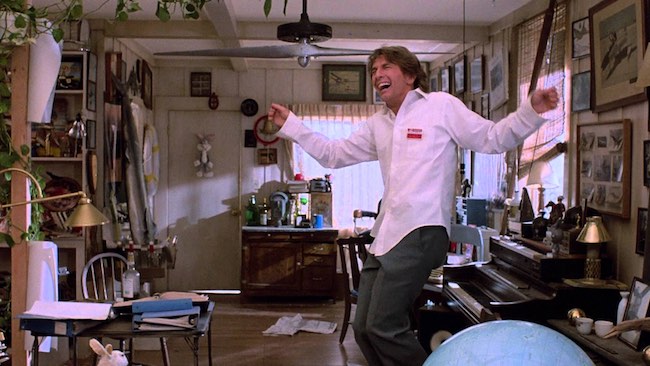
The perfect casting pits Quaid’s charm against Short’s manic silliness, making this a wonderful buddy movie (only with one of the buddies essentially haunting the other). Quaid makes the most of the static scenes in which he’s simply sitting in the pod, cracking jokes about Short’s digestive tract. Short, meanwhile, sometimes goes overboard with the physical comedy, an art form that has not fared well in the twenty-first century. Still, there are more subtle moments worth watching. The look on Short’s face when his captors suggest re-enlarging the pod while it’s still inside him is priceless. (“Have you any idea the kind of mess that would make?” one of them asks.)
Many viewers fell in love with Meg Ryan in the role of Lydia, a reporter who has recently broken up with Tuck. (Quaid really did fall in love with her—they were married a few years later.) Though the film leaves her offscreen for a large chunk of time, the script gives Lydia the opportunity to rescue someone (twice, in fact), rather than waiting to be rescued. And her clumsy use of a handgun makes me wonder why Ryan wasn’t cast in more slapstick comedies after this film. She’s hilarious.
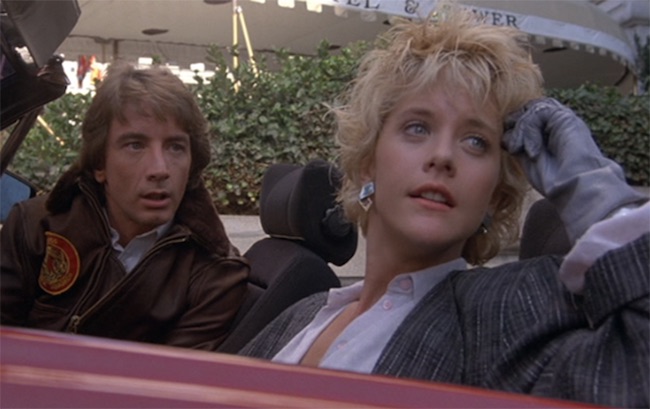
The filmmakers made use of other actors familiar to science fiction. Robert Picardo, the Doctor on Star Trek: Voyager, shows up as the creepy smuggler known as the Cowboy. Vernon Wells (The Road Warrior, Commando) plays the Terminator-like Mr. Igoe, while the great Kevin McCarthy (Invasion of the Body Snatchers) is Scrimshaw, the poor man’s Lex Luthor who is trying to steal the secrets of miniaturization. In one crazy scene, a puppet version of McCarthy wrestles with Short in a speeding car; a stunt that my brother and I would watch over and over, laughing hysterically. Even legendary animator Chuck Jones makes a cameo—fitting, given the cartoonish tone to the movie. The pod, I should point out, sounds like the Looney Toons’ Tasmanian devil when it revs up.
Puppet McCarthy notwithstanding, the special effects hold up today, and they won a well-deserved Oscar for their depiction the human body as an alien landscape. Jerry Goldsmith’s score is spectacular, as always, and the music of Sam Cooke is used to great effect. At the same time, the background of the film adds texture to the story. The lab where Tuck gets miniaturized has a clunky, cluttered look, with papers and gadgets strewn about, almost like a nerdy teenager’s bedroom or a high school AV club. Scrimshaw’s lab, on the other hand, features gleaming white walls, with sleek, modern equipment that hums like the bridge of the Enterprise. This contrast plays out in the climactic battle between Igoe’s menacing spacesuit and Tuck’s scrappy little pod, which resembles a harmless bumblebee in comparison. Dante also ruthlessly satirizes Jack’s boring life, dressing him in his Safeway uniform for most of the film, and later placing him in a doctor’s office with a cheesy painting of a beach on the wall. Later, when we see Jack wearing Tuck’s leather jacket, or pursuing the Cowboy in a glitzy nightclub, we begin to witness the change taking place in him.
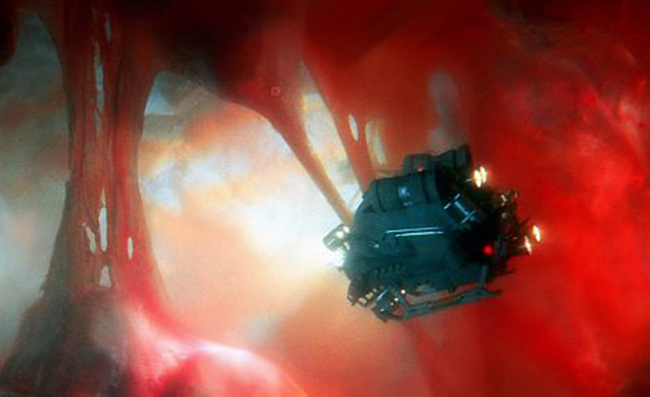
That, I think, is what separates Innerspace from other films of the era. One of the odd things about Ghostbusters and Back to the Future in particular is that the main characters don’t actually change—there is no arc, as the creative writing people like to say. Marty McFly and Peter Venkman begin as confident oddballs, they have their adventures, and then they continue on as confident oddballs. Which is fine—part of the appeal of those movies is that we want to be like those guys. But Innerspace is telling a different story, in which an unlikely friendship permanently alters the participants. Tuck’s good-natured attempts to get Jack to be brave feel authentic and even heartwarming. “You’re not the same man you were this morning,” Tuck says at one point. “You’re not gonna bag groceries all your life, are ya, Jack?” As the story unfolds, Putter discovers that he’s even stronger than he thought—with or without Tuck coaching him. At the same time, Jack tries to point Tuck in a better direction. In a genuinely well-acted scene, Jack angrily tells him that Lydia deserves someone better—right before he starts punching his own body, shouting, “Where are you?”
Granted, Jack’s newfound chutzpah gets a little weird, especially when it leads to an awkward, out-of-left-field kiss with Lydia that muddles the plot. But I’m quibbling. Tuck helps Jack find his true potential without the script descending into schmaltz, and that’s a special thing. At the end, when the two men finally meet, the bond between them is real. (Actually, it reminds me of when John McClane finally comes face-to-face with Al Powell in Die Hard.)
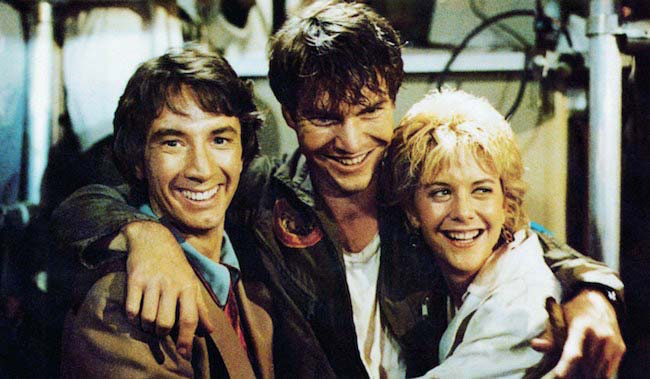
Even better is the closing shot of the movie. As the credits roll, and Rod Stewart sings a cover of “Twistin’ the Night Away” (you can see Martin Short hamming it up with Stewart in the video for the song, here), the camera follows Jack as he drives along the California coastline, pursuing Tuck and Lydia on another crazy adventure. Every time I watch the movie, I sit though the entire four-minute sequence, and I always feel a little sad when the cars are too far away to see, and the image at last fades out. Even though we never got to see the new and improved Jack in a sequel, I’m grateful for the journey. Where else but a sci-fi comedy can you find such hope in the ridiculous?
Robert Repino (@Repino1) grew up in Drexel Hill, Pennsylvania. After serving in the Peace Corps in Grenada, he earned an MFA in Creative Writing at Emerson College. He is the author of Mort(e) (Soho Press, 2015), Leap High Yahoo (Amazon Kindle Singles, 2015), Culdesac (Soho Press, forthcoming), and D’Arc (Soho Press, forthcoming). He works as an editor for Oxford University Press and has taught for the Gotham Writers Workshop.










